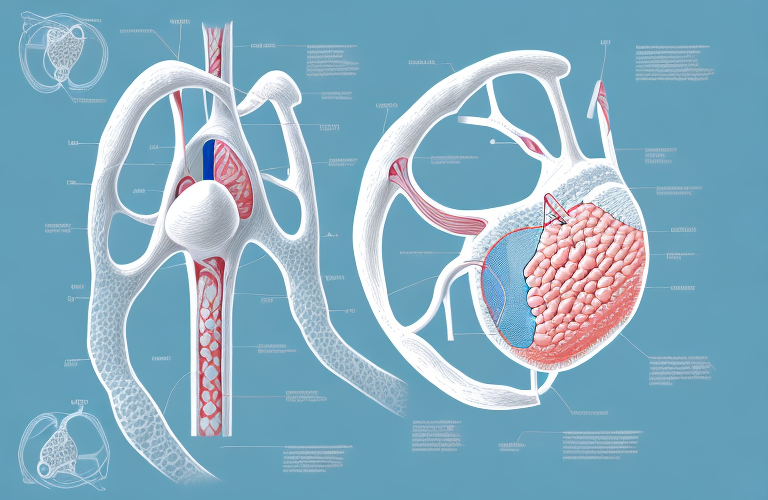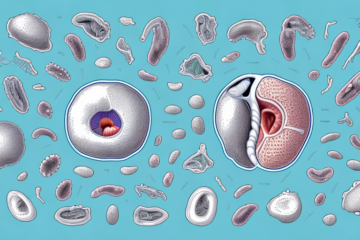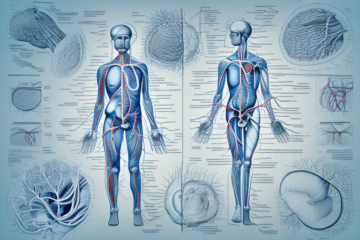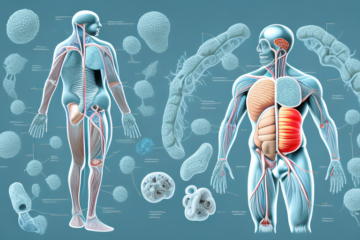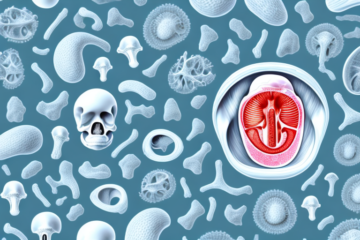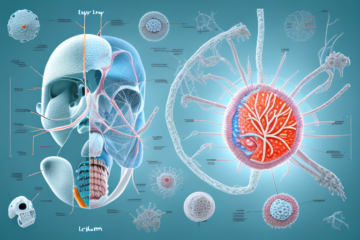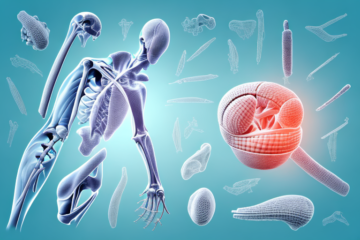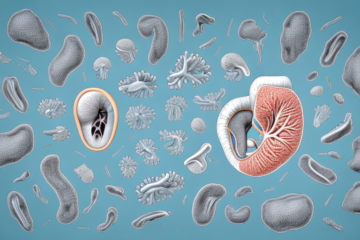The female reproductive system is a complex and fascinating part of the human body, and one of its most important components is the vagina. Despite being an intimate and essential part of female anatomy, there are still many misconceptions and misunderstandings about the function and purpose of the vagina. In this article, we’ll take an in-depth look at the basics of the vagina, explore its anatomy and role in reproduction, and discuss common issues and how to maintain proper vaginal health.
The Basics: What is a Vagina?
The vagina is an elastic and muscular canal that forms part of the female reproductive system. It is located between the external genitalia (the vulva) and the cervix (the lower part of the uterus). The vagina serves many important functions, including sexual intercourse, childbirth, and menstruation. It is lined with a mucous membrane that produces secretions to help lubricate and protect the vaginal canal.
One of the most important functions of the vagina is to provide a pathway for sperm to reach the egg during sexual intercourse. The walls of the vagina are able to expand and contract to accommodate different sizes of objects, including a penis or a baby during childbirth.
It is important to maintain good vaginal health by practicing good hygiene, wearing breathable clothing, and avoiding harsh chemicals or douching. Regular gynecological check-ups can also help to detect any potential issues or infections early on.
Understanding the Anatomy of the Vagina
The vagina is made up of several different parts, each with a specific function. The external genitalia include the labia majora (outer lips) and labia minora (inner lips), which protect the vaginal opening. The clitoris, a highly sensitive organ, is located near the top of the vulva and is important for sexual arousal and pleasure. Inside the vaginal canal, the cervix is situated at the back of the vagina and opens into the uterus. The walls of the vagina are made up of layers of muscle and connective tissue, and contain numerous blood vessels and nerve endings.
It is important to note that the vagina is a self-cleaning organ and has its own natural balance of bacteria. Using harsh soaps or douching can disrupt this balance and lead to infections or other complications. It is recommended to simply clean the external genitalia with warm water and mild soap, and to avoid using any scented products in the area.
How Does the Vagina Work?
The vagina is a highly adaptable organ that can stretch and contract in response to a variety of stimuli. During sexual arousal, the vaginal walls become engorged with blood and secrete natural lubrication to make intercourse more comfortable and pleasurable. The vagina also plays a vital role in reproduction, allowing for the transfer of sperm from the male to the female during sexual intercourse and providing a passageway for the baby during childbirth.
Additionally, the vagina has a self-cleaning mechanism that helps to maintain its pH balance and prevent infections. The walls of the vagina are lined with natural bacteria that produce lactic acid, which helps to keep the environment acidic and prevent the growth of harmful bacteria. However, it is important to maintain good hygiene practices, such as washing the external genital area with mild soap and water, to avoid disrupting this delicate balance.
The Role of the Vagina in Reproduction
During sexual intercourse, the penis enters the vagina and deposits semen near the cervix. If sperm are present in the semen, they may travel through the cervical opening and into the uterus, where they can fertilize an egg if one is available. The fertilized egg then implants in the lining of the uterus and begins to grow into a fetus. The vagina also plays a critical role during childbirth, as the baby passes through the vaginal canal on its way out of the body.
Aside from its role in reproduction and childbirth, the vagina also has other important functions. It is a self-cleaning organ that produces natural lubrication to keep the vaginal walls moist and healthy. The pH balance of the vagina is also important in preventing infections and maintaining overall vaginal health.
However, the vagina can also be susceptible to various health issues such as yeast infections, bacterial vaginosis, and sexually transmitted infections. It is important to maintain good hygiene practices and seek medical attention if any unusual symptoms or discomfort arise.
The Importance of Proper Vaginal Health
Maintaining good vaginal health is essential for overall reproductive health and personal comfort. Proper hygiene, safe sex practices, and regular gynecological exams can help prevent or treat many common vaginal issues, including infections, discharge, odor, itching, and pain during sex or urination. Maintaining a healthy diet and lifestyle can also help support vaginal health.
It is important to note that certain products and habits can actually harm vaginal health. Using scented products, such as soaps or douches, can disrupt the natural balance of bacteria in the vagina and lead to irritation or infection. Wearing tight clothing or underwear made of non-breathable materials can also create a moist environment that promotes the growth of harmful bacteria. It is best to stick to gentle, unscented products and breathable clothing to maintain optimal vaginal health.
Common Vaginal Issues and How to Deal with Them
Some of the most common vaginal issues include yeast infections, bacterial vaginosis, and sexually transmitted infections (STIs). These can cause symptoms such as itching, burning, abnormal discharge, and pain during sex. Treatment for these conditions may include medication, topical creams, or lifestyle changes. It’s important to seek medical attention if you suspect you may have a vaginal issue, as untreated infections can lead to more serious health problems.
In addition to seeking medical attention, there are also steps you can take to prevent vaginal issues. These include practicing good hygiene, wearing breathable cotton underwear, avoiding douching and scented products, and using condoms during sexual activity. It’s also important to maintain a healthy diet and exercise regularly to support overall vaginal health. By taking these preventative measures and seeking prompt treatment when necessary, you can help maintain a healthy and comfortable vaginal environment.
The Connection Between the Vagina and Sexual Pleasure
The vagina is a highly sensitive organ with many nerve endings, making it an important part of female sexual arousal and pleasure. Different types of stimulation can lead to different types of orgasms, including clitoral, vaginal, and blended orgasms. Experimenting with different positions, types of touch, and levels of arousal can help increase sexual pleasure and satisfaction.
It is important to note that every woman’s body is unique and what works for one person may not work for another. Communication with sexual partners is key in discovering what feels good and what doesn’t. Additionally, factors such as stress, medication, and hormonal changes can affect sexual pleasure and should be taken into consideration.
It is also important to prioritize vaginal health in order to maintain sexual pleasure. This includes practicing safe sex, regularly visiting a gynecologist, and maintaining good hygiene. Any changes in vaginal discharge, odor, or discomfort should be addressed with a healthcare provider to ensure proper treatment and prevention of potential infections or conditions.
Exploring Different Types of Orgasms Through the Vagina
Although clitoral stimulation is often the most reliable way to achieve orgasm for many women, some women may also experience vaginal orgasms. These may be caused by stimulation of the G-spot, a sensitive area located on the front wall of the vagina. Other women may experience orgasms through blended stimulation, which combines clitoral and vaginal stimulation.
It is important to note that not all women are able to achieve vaginal orgasms, and that is completely normal and okay. Every woman’s body is different and responds differently to stimulation. It is also important to communicate with your partner about what feels good and what doesn’t, in order to enhance sexual pleasure and satisfaction for both parties.
Tips for Maintaining a Healthy and Happy Vagina
There are many things you can do to help maintain a healthy and happy vagina. Some tips include practicing safe sex, using mild, unscented soaps and detergents, avoiding douching, wearing cotton underwear, staying well-hydrated, and taking probiotics to promote healthy bacteria in the vaginal canal. It’s also important to visit your gynecologist regularly for check-ups and screenings, even if you are not experiencing any symptoms.
In addition to the above tips, it’s important to pay attention to any changes in your vaginal health. If you notice any unusual discharge, itching, or discomfort, it’s important to see your gynecologist right away. These symptoms could be a sign of an infection or other health issue that needs to be addressed.
Another important factor in maintaining vaginal health is practicing good hygiene. This includes wiping from front to back after using the bathroom, changing out of wet clothing as soon as possible, and avoiding tight-fitting clothing that can trap moisture and bacteria. By following these tips and taking care of your vaginal health, you can help prevent infections and other issues and maintain a happy, healthy vagina.
Debunking Myths About the Vagina and Female Sexuality
There are many myths and misconceptions about the vagina and female sexuality that can lead to shame, guilt, and discomfort. Some common myths include the idea that having a certain number of sexual partners can “ruin” the vagina, that the size or appearance of the vagina is related to sexual pleasure or promiscuity, and that women should not enjoy or pursue sexual pleasure for themselves. It’s important to recognize and challenge these myths in order to promote healthy sexual attitudes and behaviors.
Another common myth is that the vagina is always wet and ready for sex. In reality, vaginal lubrication can vary depending on factors such as hormonal changes, medication use, and arousal level. It’s important for partners to communicate and use additional lubrication if needed to ensure comfortable and pleasurable sexual experiences. Additionally, the idea that women should only experience vaginal orgasms is a myth. Many women can experience orgasm through clitoral stimulation, and there is no “right” or “wrong” way to experience pleasure. By debunking these myths and promoting accurate information, we can empower women to have fulfilling and enjoyable sexual experiences.
Understanding and Managing Pain during Intercourse
For some women, sexual intercourse can be painful or uncomfortable. This can be caused by a variety of factors such as infection, hormonal changes, or psychological issues. Treatment for pain during intercourse may include medication, physical therapy, or counseling. It’s important to communicate with your partner and healthcare provider about any pain or discomfort you may be experiencing.
One common cause of pain during intercourse is vaginismus, which is a condition where the muscles in the vagina involuntarily contract, making penetration difficult or impossible. This can be caused by anxiety, trauma, or a history of sexual abuse. Treatment for vaginismus may include pelvic floor exercises, counseling, or the use of dilators to gradually stretch the vaginal muscles.
Another factor that can contribute to pain during intercourse is menopause. As estrogen levels decrease, the vaginal tissues can become thinner and less elastic, leading to discomfort during sex. Hormone replacement therapy or the use of vaginal moisturizers or lubricants can help alleviate this symptom.
How to Talk to Your Doctor about Vaginal Concerns
Talking to your doctor about vaginal concerns may be uncomfortable or embarrassing, but it’s important to seek medical attention if you are experiencing any symptoms or issues. Your doctor can help diagnose and treat any vaginal problems you may be having, as well as provide advice and guidance on how to maintain good vaginal health. It may be helpful to prepare a list of questions or concerns beforehand to ensure you cover everything you need to during your appointment.
One common concern that women may have is vaginal discharge. While some discharge is normal, changes in color, consistency, or odor may indicate an infection or other issue. It’s important to discuss any changes in your discharge with your doctor to determine the cause and appropriate treatment.
Another important topic to discuss with your doctor is sexual health. Your doctor can provide information on safe sex practices, as well as screen for sexually transmitted infections. It’s important to be honest with your doctor about your sexual history and any concerns you may have, as this can help ensure you receive the best possible care.
The Future of Female Reproductive Health: Innovations and Advancements in Gynecology and Obstetrics
The field of gynecology and obstetrics is constantly evolving, with new advancements and technologies being developed to improve reproductive health outcomes for women. Some current areas of focus include advancements in contraception, fertility treatments, maternal and fetal health, and minimally invasive surgical techniques. It’s exciting to see how these advancements will continue to improve the lives of women for generations to come.
In conclusion, the vagina is a complex and essential organ of the female reproductive system, with many important functions and roles to play. Understanding its anatomy, function, and role in sexual and reproductive health is crucial for maintaining overall well-being and happiness. By taking care of your vaginal health, talking to your doctor about any concerns, and challenging harmful myths and misconceptions, you can support your body and enjoy all the benefits that come with having a healthy and happy vagina.
One area of innovation in gynecology and obstetrics is the use of telemedicine to provide remote care for women. This technology allows doctors to consult with patients and monitor their health from a distance, which can be especially beneficial for women in rural or underserved areas. Additionally, telemedicine can provide greater access to care for women who may have difficulty traveling to appointments due to work or family obligations. As telemedicine continues to advance, it has the potential to revolutionize the way women receive reproductive healthcare.

